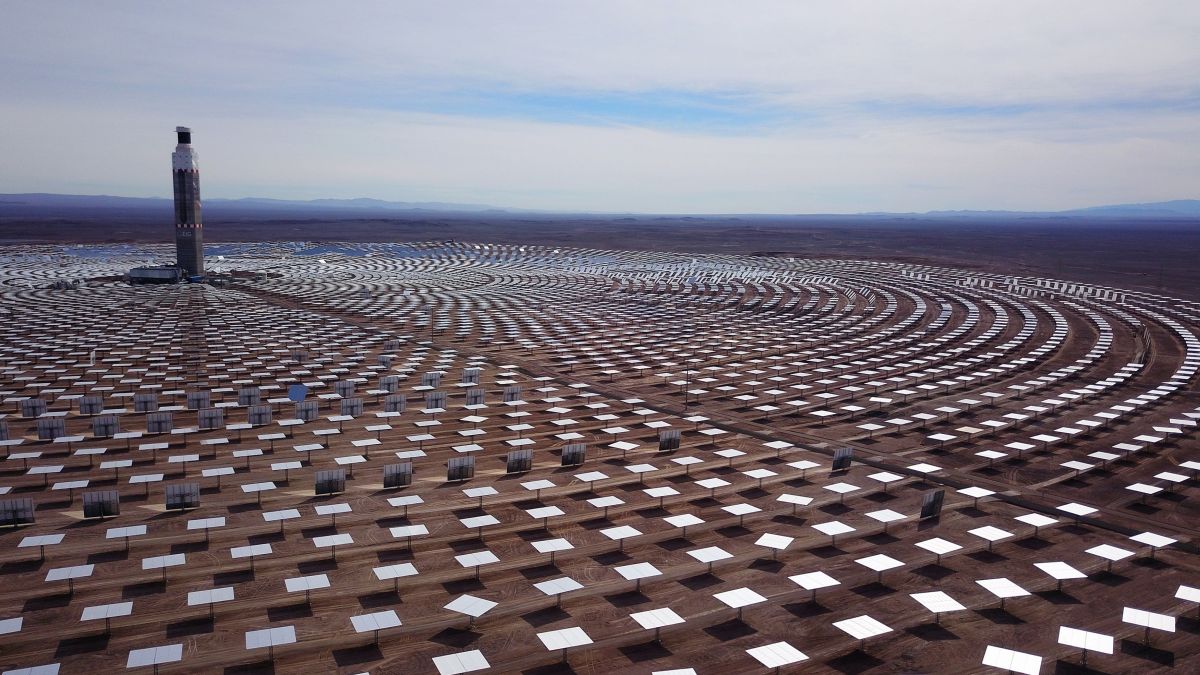The Course of the Energy Transition in Latin America
The energy transition in Latin American countries is increasingly important for their economic development and the fight against climate change. These states want to use their potential of renewable energy sources (RES) and raw materials such as lithium deposits to attract investments and increase their participation in global supply chains building the low-carbon economy. The EU and its Member States—Germany in particular—have been more and more involved in cooperation with the region in these areas. Poland can also benefit, for example, through the exchange of experience and the engagement of Polish companies.
 Fot. Elvis Gonzalez/ EFE/ FORUM
Fot. Elvis Gonzalez/ EFE/ FORUM
Region Specificities
Latin America is one of the areas most affected by climate change, for example, by more frequent extreme weather phenomena. However, it accounts for only around 8% of the world’s greenhouse gas (GHG) emissions, mainly from the energy sector, as well as agriculture and land use, including deforestation. The region’s high urbanisation rate of more than 81% in 2020 makes cities significant GHG emitters.
Fossil fuels dominate in the primary energy production in Latin America but, thanks to their high availability, RES exceeds 25%, half of which is biomass (wood, among others). In electricity generation alone in 2019, RES was 58%. Hydropower comprises almost 77% of that, but it is becoming increasingly unreliable due to climate change (for example, longer droughts) and controversial because of the negative effects on the local environment and communities. Hence, the interest in developing wind and solar energy. The Inter-American Development Bank (IDB) forecasts that by 2030, the share of the two sources in electricity production in the region will reach 19%, up from 13% at present.
Energy Transition
Latin American countries are striving to increase renewables’ share in their energy mixes. These ambitions are seen in the RELAC initiative launched in 2019 during the COP25 climate conference and which includes a majority of the Latin American countries. Through RELAC, they have committed to increase the share of RES in electricity generation to at least 70% by 2030. Most countries in the region also want to use renewables’ potential to develop the production and export of green hydrogen.
According to the International Renewable Energy Agency (IRENA), Brazil and Mexico have the largest electricity generation capacity from RES in the region. Brazil has consistently expanded its hydropower infrastructure, but in the last decade that has not been followed by an increase in electricity production due to a drop in rainfall and lower river levels, among other reasons. At the same time, the share of solar and wind capacity increased from 1.75% in 2010 to nearly 14% in 2020. Mexico also recorded a significant increase in both sources’ capacity from 0.9% to nearly 16%. However, renewables make up less than 32% of Mexico’s installed capacity, while in Brazil it is nearly 83%. Chile has the third-highest share of RES capacity, mainly due to the development of the solar energy sector. It is also singular in the region because of its relatively high use of coal-fired power plants (responsible for about 20% of electricity generation), but it declared it would close all of them by 2025. In November 2020, Chile was the first Latin American country to publish a strategy for the development of green hydrogen.
There are also high expectations in the region related to the exploitation of raw materials necessary for low-carbon technologies. Bolivia, Argentina, and Chile have the largest documented lithium deposits in the world, which gives them the opportunity to participate in global supply chains involving batteries for electric vehicles, energy storage solutions, and others. Chile is also the largest producer of copper, a conductor used in photovoltaic installations and other products. Brazil is an important supplier of rare earth metals, needed for fuel cells, batteries, etc.
International Cooperation
The progress of the energy transition in Latin American countries depends on the implementation of regulations required to develop the renewables sector and on cooperation in the region for the modernisation and integration of energy networks, among other factors. The ability to obtain financing and investment is also essential, and long-term national strategies on low-carbon technologies are aimed to help. However, the weakness of the instruments for financing climate projects in the region is a limitation.
Latin American countries obtain funds for emissions reduction mainly from multilateral instruments, in particular, from the Clean Technologies Fund managed by the World Bank and the Green Climate Fund established in the Paris Agreement. The Amazon Fund to protect the Brazilian part of the rainforest is another important source. In addition, the funds come from bilateral aid, for example, from Germany and the UK. The countries of the region also hope to take advantage of the mechanisms of sustainable development financing and green bonds discussed at COP26.
China, the U.S., and the EU are the main investors in green technologies in Latin America. Chinese companies have engaged in the energy sector in the region, for example, in major hydroelectric projects in Argentina and Bolivia. They are also the most important suppliers of renewable technologies in the region: solar panels, electric buses, and vehicle batteries, among others. In September, China declared its willingness to increase financing of the renewables sector in developing countries, including Latin America.
The U.S. under the Biden administration has prioritised cooperation with Latin American partners in the field of climate policy, including in their energy transition. By that, the U.S. government wants to encourage exports and investments in the green technology sector in Latin America. Low-interest loans for renewables development is one of the instruments to be used. The U.S. intends to build a competitive offer compared to Chinese investments in the region.
For the EU, Latin American countries are important partners in the context of the ambitions defined in the European Green Deal strategy announced in 2019. The Euroclima+ Programme is one of the EU tools. It supports 18 Latin American countries in meeting emission reduction targets and exchanging experience. Another tool is LAIF, a fund aimed to help Latin American countries achieve their global sustainable development goals, including in climate policy. Among the EU members, Germany stands out for its activity in the region. For example, in December 2020, Germany in cooperation with LAIF announced a payment of €15 million to LAGREEN, the first green bond fund for Latin America. Some European companies are involved in green hydrogen projects, for example, Germany’s Siemens Energy and Italy’s Enel Green Energy. European investments, however, often involve the use of Chinese components for renewable technologies. Latin American countries are also important suppliers of critical raw material, a list periodically published by the EU, most recently in 2020. The Union imported, for example, 78% of lithium from Chile, 85% of niobium from Brazil, and 25% of fluorspar from Mexico.
Conclusions
Development of the RES sector, and consequently of the production and export of green hydrogen, will strengthen Latin America’s significance in the global processes of the energy transition. However, fulfilling these ambitions will depend on whether they tackle such challenges as attracting funding and improving the regulatory framework. They also need to incorporate the low-carbon economy in national development concepts, including as part of the economic recovery after the COVID-19 pandemic.
The potential and course of the energy transition in Latin American countries make them important partners of the EU in fulfilling its climate ambitions. To accomplish them, the EU will need to increasingly support Latin America in building a low-carbon economy. As part of this, the Union will emphasise cooperation on preventing deforestation, the expectation of which already has led to the delay in ratifying the EU-Mercosur Agreement.
Strengthening EU-Latin American cooperation in the energy transition is in Poland’s interest. The country may expand the possibilities of promoting solutions created under the GreenEvo green technology accelerator of the Polish Ministry of Climate and Environment, as well as facilitating investments in auxiliary industries, for example, developing smart power grids. The exchange of experience in the field of energy transition may become an important topic in Poland’s political dialogue with such Latin American partners as Chile. Both countries share similar challenges, especially the transition away from coal-fired energy and the Chilean plans for the energy transition in the mining sector (for example, the use of green hydrogen) which will concern the Sierra Gorda copper and silver mine, which belongs to Polish company KGHM.



